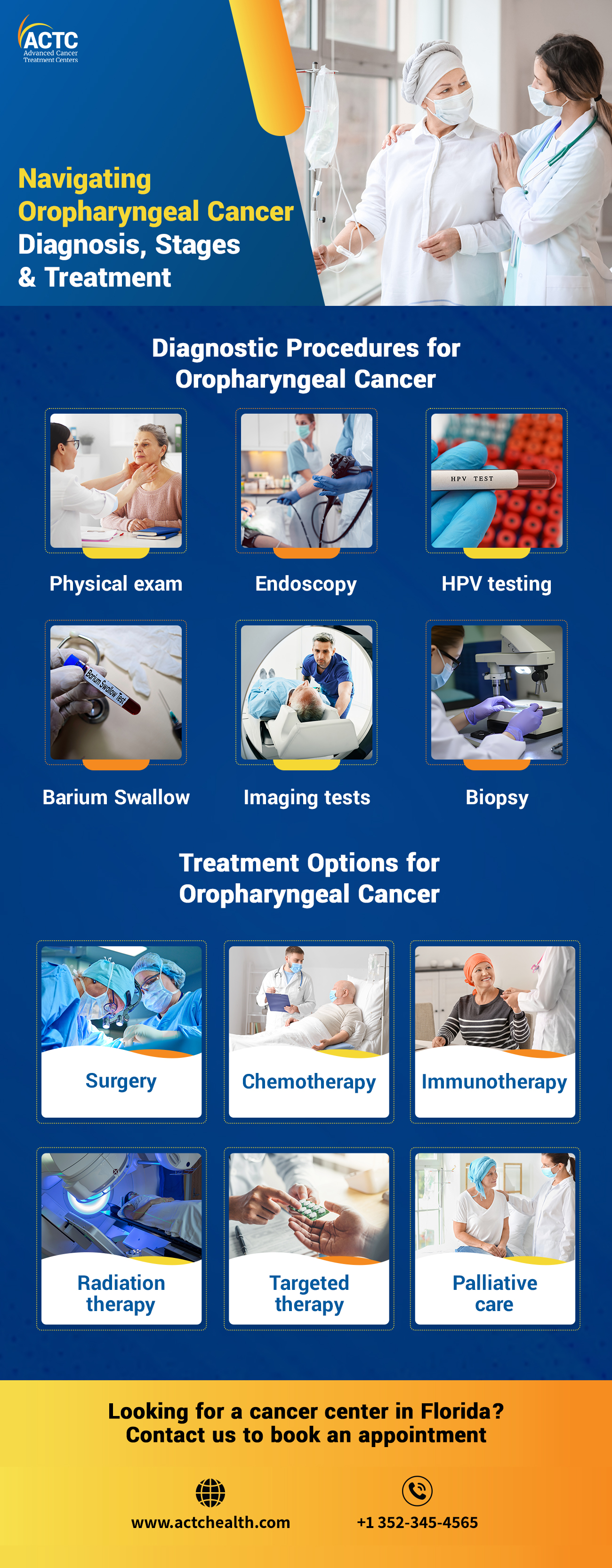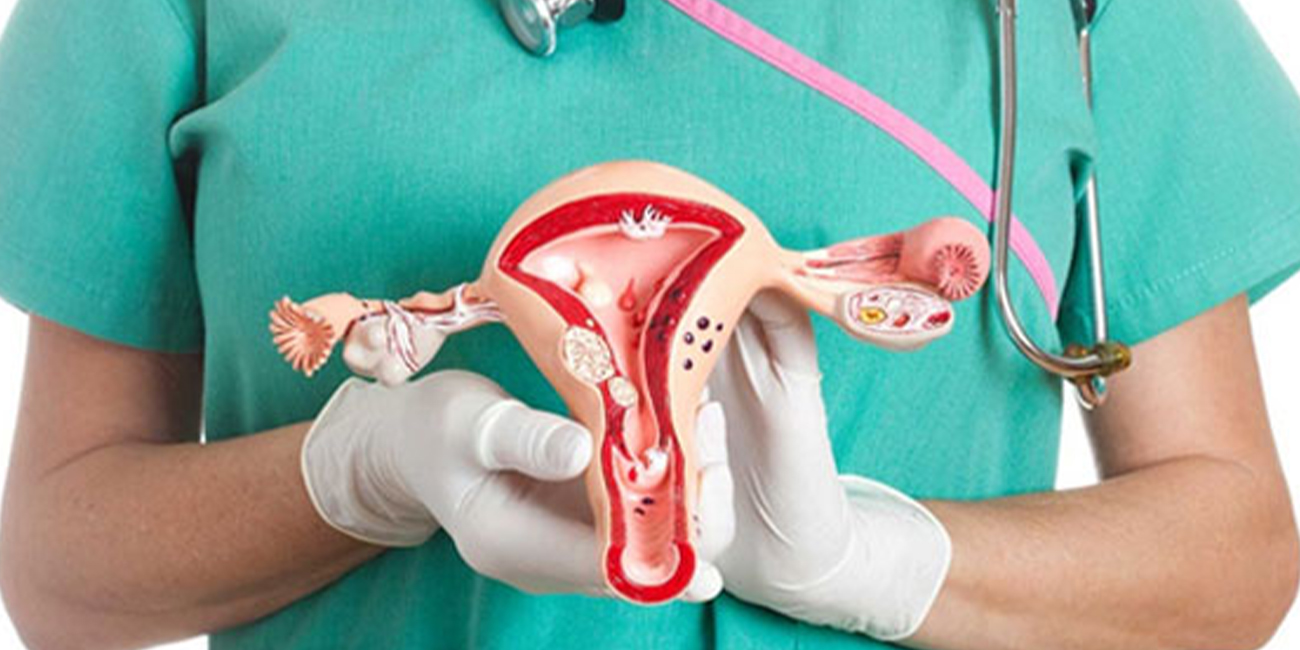
Book a Consultation
Thank you!
Your form has been sent successfully.



July 28, 2023
Oropharyngeal cancer is a type of cancer that develops in the oropharynx, which is situated behind the oral cavity (mouth) and extends from the soft palate in the roof of the mouth to the base of the tongue. The oropharynx is a tubular structure, playing a crucial role in the respiratory and digestive process.
Oropharyngeal cancer occurs when abnormal cells in the tissues of the oropharynx grow uncontrollably. This type of cancer typically begins in the cells lining the throat and can spread to nearby lymph nodes and other parts of the body if not treated in time.
This cancer is often diagnosed in the advanced stage, mainly due to a lack of awareness about this disease. In this blog post, we will share a comprehensive understanding of the symptoms, diagnosis, staging, and treatment options for oropharyngeal cancer. Read on to learn more.
There is a range of oropharyngeal cancer symptoms that may vary from person to person. These symptoms may include a persistent sore throat that doesn't improve with typical remedies or initial course of treatment. Individuals may also experience pain while swallowing.
Other possible signs include voice changes, a lump or mass in the neck, unexplained weight loss, and persistent coughing. However, these symptoms may also indicate various other conditions. Therefore, it is crucial to consult a healthcare professional for an accurate diagnosis if the symptoms are persistent or worsening.

When diagnosing oropharyngeal cancer, healthcare professionals utilize various methods to accurately assess the presence and extent of the disease. The following are some common diagnostic procedures used in detecting oropharyngeal cancer:
During a physical examination, a healthcare provider will carefully examine an individual’s mouth, throat, and neck for any visible signs of abnormalities. They will check for lumps, ulcers, or other suspicious areas that may indicate the presence of cancer.
It involves the use of a flexible, lighted tube called an endoscope to visually examine the inside of the throat and oropharynx. This procedure allows healthcare providers to directly visualize the tissues and order biopsies if necessary. Endoscopy can help determine the location and extent of the tumor with great precision.
Physicians usually recommend it to determine if the cancer is related to human papillomavirus (HPV) infection, which is a significant risk factor for oropharyngeal cancer.
A barium swallow or modified barium swallow is a radiographic procedure in which individuals have to swallow a liquid containing barium. This substance coats the inside of the throat and esophagus, allowing the structures to be seen more clearly on X-rays. It helps evaluate swallowing function and detect any abnormalities that may indicate the presence of cancer.
CT Scan (Computed Tomography) uses X-rays in combination with computer technology to create detailed cross-sectional images of the throat and surrounding structures. It helps detect the size and location of the tumor and any involvement of nearby lymph nodes.
PET Scan (Positron Emission Tomography) involves injecting a small amount of radioactive material to detect areas of increased metabolic activity.
X-rays help provide a broad overview of the head, neck, and chest areas, and can help identify abnormalities.
MRI (Magnetic Resonance Imaging) uses powerful magnets and radio waves to create detailed images of the throat and nearby structures, providing a more comprehensive evaluation of the tumor.
Ultrasound uses sound waves to create images of the throat and neck to help assess the lymph nodes for any signs of cancer spread.
It is the definitive diagnostic procedure for any type of cancer where healthcare providers remove a small tissue sample from the suspicious area. The sample is then examined under a microscope by a pathologist to confirm the presence of cancer cells and determine the specific type and subtype of oropharyngeal cancer.
There are different types of biopsies, including:
Incisional Biopsy: In this type of biopsy, a small portion of the tumor is removed for examination.
Oral Brush Biopsy: It is a minimally invasive procedure where healthcare providers use a small brush to collect cells from the oral cavity surface. It is often used to evaluate suspicious lesions or areas that are difficult to access.
The choice of diagnostic procedures may vary depending on the individual's health condition and the symptoms they are experiencing. Therefore, it is crucial to consult a healthcare professional for detailed guidance.
Staging is a crucial step to decide the most suitable treatment options. The TNM staging system is commonly used to determine the extent and stage of oropharyngeal cancer. This system considers three key factors: tumor size and invasion (T), lymph node involvement (N), and the presence of distant metastasis (M). Here are the stages of oropharyngeal cancer based on the TNM system:
Tis, N0, M0
This stage, also known as carcinoma in situ, indicates the presence of abnormal cells which are still confined within the epithelium. Cancer has not yet invaded deeper tissues or affected the nearby lymph nodes or distant organs yet.
T1, N0, M0
The tumor is 2 cm or smaller and has not yet invaded the nearby lymph nodes or distant sites.
T2, N0, M0
The tumor is between 2 cm to 4 cm but still confined to the oropharynx. There is no involvement of lymph nodes or distant metastasis.
T1 or T2, N1, M0 or T3, N0 or N1, M0
In this stage, the tumor may be any size between 1 cm to 4 cm and may have spread to nearby lymph nodes (N1). However, there is no evidence of distant metastasis.
T4a, N0 or N1, M0 or T1 to T4a, N2, M0
The tumor has invaded nearby structures, such as the larynx, deep muscle, or jawbone (T4a). It may also involve nearby lymph nodes (N2). However, there is no distant metastasis.
T4b, Any N, M0 or Any T, N3, M0
The tumor has further advanced and invaded other structures, such as the base of the skull, carotid artery, or mediastinal structures (T4b). There can be nodal involvement but no distant metastasis.
Any T, Any N, M1
This stage indicates the presence of distant metastasis (M1), with cancer spreading to distant organs or distant lymph nodes.

Oncologists often consider surgery the primary treatment approach for oropharyngeal cancer. The type of surgical procedure will depend on the stage and location of the tumor:
Transoral surgery: This minimally invasive procedure involves removing the tumor through the mouth using specialized instruments. It can be an option for smaller tumors that are easy to access.
Partial or total pharyngectomy: In more advanced cases, a part (partial) or the entire pharynx (total) may need to be surgically removed. Surgeons may recommend reconstruction techniques to restore swallowing and speech functions.
Neck dissection: This procedure involves removing lymph nodes in the neck to determine if the cancer has spread. It can be performed along with primary tumor surgery.
By using high-energy X-rays or other forms of radiation, radiation therapy can effectively kill cancer cells. For oropharyngeal cancer, oncologists may use it alone or in combination with surgery or chemotherapy.
In chemotherapy, oncologists administer drugs to kill cancer cells or slow down their growth before or after surgery and radiation therapy, or in combination with them. Chemotherapy for oropharyngeal cancer may involve a combination of different drugs and is often used in advanced stages.
Oncologists usually use targeted therapy in cases where specific genetic mutations or markers are present in the tumor. The drugs used in targeted therapy are designed to specifically target certain molecules or pathways involved in cancer growth.
Immunotherapy has shown promising results in treating oropharyngeal cancer, particularly in cases associated with HPV infection by boosting the body's immune system to recognize and attack cancer cells.
This is not a treatment approach but a supportive care where healthcare professionals focus on providing relief from symptoms and improving the quality of life for individuals with advanced oropharyngeal cancer. It involves managing pain, alleviating the side effects of treatment, and providing emotional and psychological support.
Individuals should discuss treatment options thoroughly with their healthcare team to make informed decisions about their treatment process.
The overall five-year survival rate for oropharyngeal cancer is around 65-70%. However, the survival rates may vary widely depending on the stage of cancer at diagnosis. For example, the five-year survival rate for localized (early-stage) oropharyngeal cancer is higher than for advanced-stage cancer.
Advancements in treatment approaches, such as the use of targeted therapy and immunotherapy, have shown promising results in improving the recovery process for oropharyngeal cancer. However, oropharyngeal cancer cases caused by HPV infection are highly preventable. Therefore, individuals should consult a physician and take preventative measures as directed.
For any queries or concerns about oropharyngeal cancer, contact ACTC, one of the best cancer centers in Florida, and receive personalized cancer care plans.



January 07, 2026
A chemo port is a small device placed under your skin that makes recei...
KNOW MORE

December 24, 2025
It's natural to wonder if testosterone replacement therapy (TRT) is sa...
KNOW MORE

December 24, 2025
A rash that will not calm down is scary, especially when it changes or...
KNOW MORE

December 24, 2025
Florida’s lung cancer burden remains significant and affects many fa...
KNOW MORE

December 24, 2025
A partial hysterectomy, also called a supracervical hysterectomy, is s...
KNOW MORE

December 24, 2025
Finding a rash on your breast can be unsettling, but remember, many ra...
KNOW MORE
